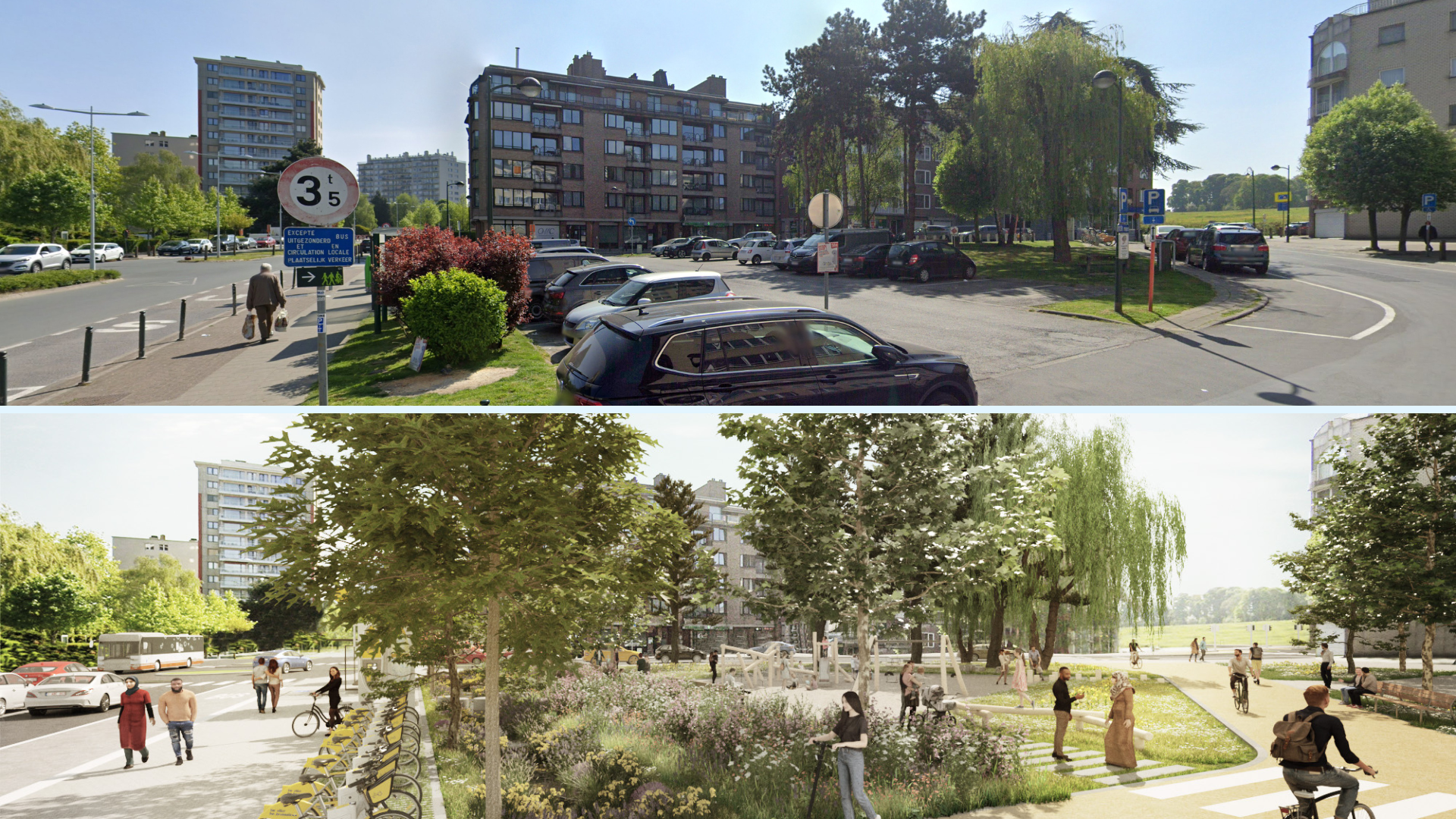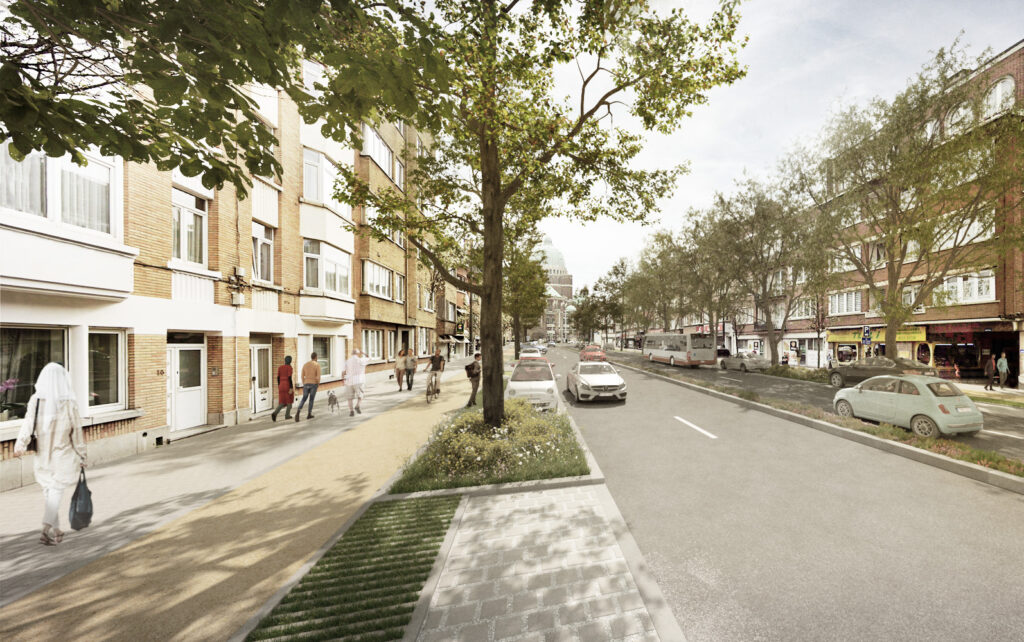Brussels Mobility will completely redevelop a large traffic axis which runs from the north of the capital region to the Koekelberg basilica. From greener squares to separate bicycle lanes, these are the plans for the overhaul.
Avenue Charles Quint is located between the Brussels municipalities of Ganshoren and Berchem-Sainte-Agathe. The major traffic axis between Flanders and Brussels is one of the main routes into the capital, used by thousands of commuters every day. It currently prioritises cars, and is uninviting for vulnerable road users, especially due to the lack of cycling facilities and secluded pavements.
Brussels Mobility aims to turn the tide with a project focusing on smooth car traffic in the area, and bringing in small parks, cycling paths and larger pavements. "Finally, Avenue Charles Quint will become an urban boulevard," said Brussels Minister for Mobility Elke Van den Brandt, adding that in the future, the road will not only accommodate car traffic but also pedestrians and cyclists.
"More attractive for business owners, more pleasant for residents and safer areas around the school neighbourhood," she added. "With new trees and green areas, there will also be meeting places for residents, who often do not have a garden or terrace."
What will the transformation look like?
With the redevelopment, Brussels Mobility aims to "integrate the avenue into the urban fabric" while ensuring it retains its function as an important traffic axis for car traffic. The flow of traffic will remain in two segments, each with two lanes, divided by a green central reservation. "Intersections that currently cause congestion will be simplified."
Crossing times for pedestrians will be reduced and pavements will be made larger, while several squares and plazas will be created or transformed to provide breathing space for pedestrians, so walking in the area becomes more enjoyable.
The four squares that will be created are located where the major road meets the Clos Louis Banken and Clos Willy Chambon, and the Rue Oscar Maesschalck and Rue de Termonde. Rich and varied greenery will be planted and street furniture such as benches and chairs, play elements and a fountain will be added.
Parking spaces on Place Marguerite d'Autriche will be moved to Avenue Marie de Hongrie so a play space can be provided on the new square.

Place Marguerite d'Autriche will become a pleasant square with space for children's games. Credit: Brussels Mobility
Of the 387 roadside parking spaces in both directions of travel across the large road, 165 will be removed to allow for the planting of large trees, adding to the greening of the street.
Between the regional border and the junction with Rue de Termonde, a two-way cycle path (almost 4 metres wide) will be constructed on the south side, connecting to the future Flemish Cycle Highway F2. Between Rue de Termonde and Basilique, one-way bike paths measuring two metres wide will be constructed on both sides of the avenue.
Additionally, 88 bicycle parking spaces will be added, as well as drop zones for e-scooters and shared bicycles.
Over the entire area of the avenue, more than 75 000 m², a large part will be softened to create verges, rain gardens and parks. Some paved areas will also be permeable, such as the car parks and the buffer zone between car parks and cycle paths.
Subject to the issue of the permit, the decision to go ahead with the redevelopment is in the hands of the next Brussels-Capital Region Government.

